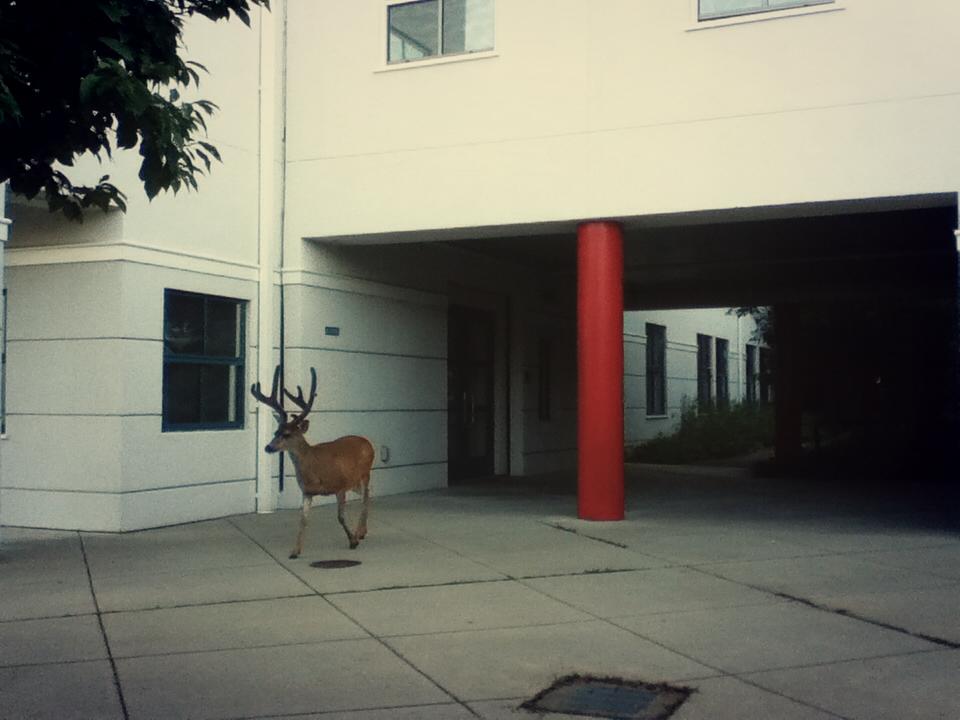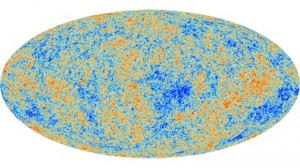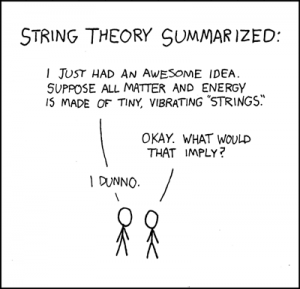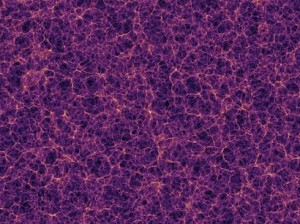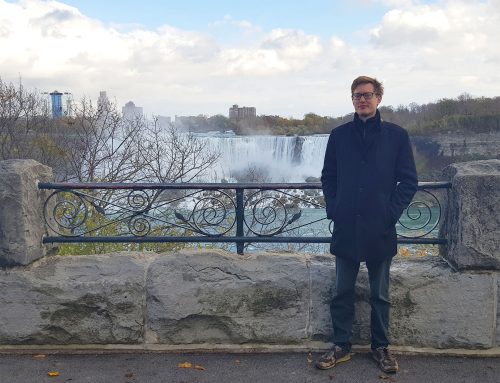by Yann Benétreau-Dupin and Chris Smeenk
Contemporary cosmology raises a number of philosophical questions, such as the limits of scientific explanations of the origin of the universe and the status of “dark energy” or the “multiverse.” Philosophers have recently turned to these topics, due to their intrinsic interest and the influx of new ideas from physics. Physicists have also confronted problems with evaluating new ideas in cosmology that seem to call out for philosophical reflection and critical analysis. Despite the prospects for fruitful work, exchanges between physicists and philosophers have not always gone well, as in a heated exchange between Lawrence Krauss and David Albert (see these pieces by Albert, Krauss, and Jim Holt). There have been more productive interactions, such as a conference hosted at Western. More recently, the Templeton Foundation has funded two new large projects (at Rutgers and Oxbridge) that aim to establish the philosophy of cosmology as an active field of interdisciplinary research.
The Rutgers project sponsored a three-week-long Summer Institute for the Philosophy of Cosmology this summer on the campus of UC Santa Cruz. The directors of the summer school were David Albert (Philosophy, Columbia), Barry Loewer (Philosophy, Rutgers), and Joel Primack (Physics and Astrophysics, UCSC). Dean Zimmerman (Philosophy, Rutgers) and Anthony Aguirre (Physics, UCSC) also helped organize this event.
Three weeks is a short amount of time to cover all things cosmological—from fluctuations in the cosmic microwave background (CMB) to the cosmological argument—and for a cross-disciplinary community to form. But an impressive list of scholars, philosophers and scientists, senior and junior, took a stab at it. All the videos and presentations of the lectures have been made accessible on line (on YouTube or on the summer school’s website—see under ‘program’).
Among a myriad of topics and challenges—theoretical as well as empirical—a few themes stood out which provide opportunities for philosophers of science to engage with ongoing research in cosmology.
• Statistical reasoning and cosmology. According to the Past Hypothesis (defended by David Albert), the arrow of time can be explained by the early universe having been in a state of extremely low Boltzmann entropy, thereby grounding the second law of thermodynamics in statistical-mechanical processes. Now, if the knowledge of the initial state of the universe can help us understand fundamental laws of physics, should it be itself explained? That such an explanation is required may be seen as debatable (Callender), as the initial state may, like laws of nature, serve as an explanatory stopping point. Theories of the initial state—whether inflationary models (Johnson) or eternal inflation (see Aguirre, Carroll, Smeenk)—aim at explaining the initial state, i.e., making it more likely, or typical. But such appeals to statistical explanations in cosmology raise issues of the applicability of statistical and probabilistic considerations to the universe: the difficulty to define a probability measure on the universe and paradoxes of probabilistic confirmation in cosmology (Aguirre); the soundness of the appeal to typicality as having explanatory strength (Goldstein).

Several participants also discussed the problem of “Boltzmann Brains,” a modern revival of problems first identified by Boltzmann. Suppose we explain the observed initial low entropy as the result of a selection effect, as follows. Imagine that globally the universe is at thermodynamic equilibrium, with “local fluctuations” away from equilibrium. Since our presence as observers requires an entropy gradient, we would predict that we occupy one of the fluctuations – and explain the initial low entropy and arrow of time. Even granting that various notions employed in this picture can be made precise, there is an obvious problem: the larger fluctuations away from equilibrium will be assigned a much smaller probability, and hence typical observers should see the minimal entropy gradient compatible with their presence as observers. The modern formulation considers fluctuations away from a quantum vacuum state. The entropy cost of a creating an isolated “brain” via quantum fluctuations is much lower than that of creating a fluctuation to the initial state of the observed universe. Physicists have taken the Boltzmann brain paradox as providing a constraint on versions of eternal inflation: a theory is empirically refuted, in some sense, if it produces more Boltzmann brains than real observers. But philosophers at the Summer Institute argued that the Boltzmann brain scenarios indicate instead that a particular position is epistemically unstable (as is often the case with skeptical scenarios). Accepting the premises of the argument leads to a conclusion that undermines the original reasons one had for accepting the premises.
• Quantum-to-classical transition in inflationary cosmology. Planck 2013 recently released new data about the cosmic background radiation (CMB), the remnant of the primordial radiation of the universe. The fluctuations observed in this radiation (representing the seeds of subsequent cosmic structure formation) have provided the main empirical target for theories of early universe cosmology. Early universe theories have been judged by how well they can account for these observed fluctuations since they were first detected in the early 90s. Inflationary cosmology allows us to derive the power spectrum of the CMB (Johnson), and a widely accepted model for subsequent structure formation (Lambda-CDM, Primack) yields further predictions for later stages of evolution.
According to inflation, the initial fluctuations originated at the quantum scale (as quantum vacuum fluctuations); these vacuum fluctuations are stretched during inflationary expansion and then “freeze out” as classical density perturbations. This process thus involves a “quantum-to-classical” transition. The problem of describing such a transition in general terms, often called the measurement problem of quantum mechanics, has resisted solution despite a great deal of effort in foundations of physics. The success of the inflationary account of structure formation thus seems to depend on solving the measurement problem. Speakers at the Summer Institute discussed the measurement problem from a variety of different perspectives, with some discussion focused on the quantum to classical transition in inflation. Goldstein and Struyve defended a de Broglie-Bohm interpretation (see also Pinto-Neto et al. 2012), Wallace claimed that a many-worlds Everettian theory of quantum mechanics is best suited to do so.
• Which unified physics for cosmology? From elementary particles to black holes and the global structure of space-time, cosmology requires a fully consistent theoretical framework that is still in its infancy. String theory is an attempt to provide such a framework of quantum states that incorporates gravity (Susskind, Vistarini). If it allows us to quantize gravity, it would provide us with a model of the emergence of space-time from quantum scales, and with a framework for the thermodynamics of black holes.
• Motivating inflationary cosmology. Many of the issues mentioned here intersect in the motivation for inflationary theory. The inflationary paradigm was initially proposed as an attempt at a dynamical explanation for the horizon problem (i.e., that regions of the early universe that cannot have been causally connected seem to be correlated) and the flatness problem (i.e., that the early universe has to be extremely close to the flat FLRW model). That there is thermodynamic equilibrium—a contentious notion when applied to the early universe—over regions not causally connected might just be a coincidence.
In the absence of a more fundamental theory such as quantum gravity, this cannot be ruled out. It is furthermore not entirely clear what a generic initial state should look like according to quantum gravity (see, for example, the first ten minutes of Johnson’s lecture on inflation). Advocates of inflation argue that a generic initial state is highly inhomogeneous, and subsequent dynamical evolution is required to render such a state compatible with what we see. This kind of case in favor of inflation provoked discussions of whether one should always prefer a dynamical explanation in this sense, and furthermore whether inflation provides a successful explanation (see Ijjas’s talk).
• Epistemic status of simulations and modeling in cosmology. Cosmology presents us with very specific issues regarding the epistemic value and nature of computer simulations. Contrary to other fields discussed in the philosophy of modeling, cosmological simulations don’t try to find out the relevant parameters to account for observed phenomena. There are only few cosmological parameters—only six—and theories to play with. Simulations in cosmology (such as those carried out by Primack‘s team) aim at recreating the few observational data we have, as accurately as possible, from parameters that are already well-known to us. Therefore, we can wonder if simulations in cosmology are as epistemologically relevant as in, say, climate science, if they don’t have the same heuristic role. (See Natarajan‘s talk on the role of cosmological simulations and the specific challenges they face).
With thanks to Neil Dewar (DPhil student, Oxford) for discussions.

